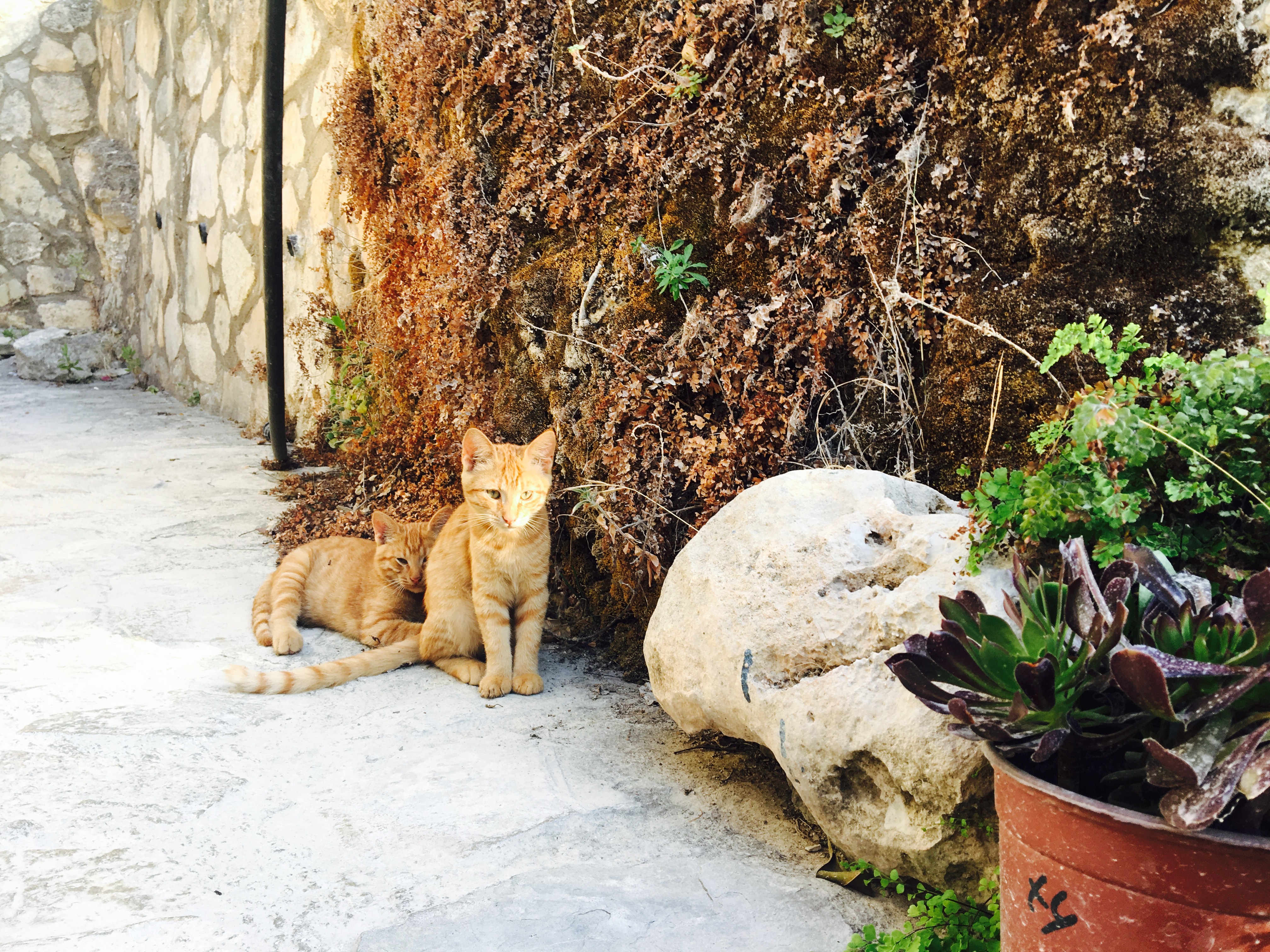Socializing Your Kitten: The Critical Window

Table of Contents
The Critical Window That Shapes Your Cat's Future
When I adopted my kitten Whiskers at 8 weeks old, I had no idea how crucial those first few months would be for his development. Looking back, I realize that the socialization work I did during those early weeks shaped the confident, friendly cat he is today. It's a window of opportunity that, once closed, is much harder to reopen.
The Science Behind Kitten Socialization
The first 16 weeks of a kitten's life are absolutely crucial for social development. During this period, kittens' brains are highly plastic and adaptable, making them most receptive to new experiences, people, and environments. This "critical window" closes around 12-16 weeks, making early socialization essential for a well-adjusted adult cat.
I learned this the hard way with my first cat, who was adopted at 6 months old and had missed much of this critical period. While we eventually worked through his fears, it took years of patient effort that could have been avoided with proper early socialization.
Understanding the Critical Window
During the critical socialization period, kittens' brains are like sponges, soaking up experiences and forming lasting associations. Positive experiences during this time create lasting positive associations, while negative experiences can lead to lifelong fears and behavioral issues.
This is why it's so important to make every new experience during this time as positive as possible. A single negative experience with a vacuum cleaner during this period can create a lifelong fear, while positive experiences can build confidence that lasts a lifetime.
My Week-by-Week Socialization Schedule
Here's the structured approach I used with Whiskers, based on research and advice from veterinarians and behaviorists:
Weeks 2-4: Early Handling and Touch
I handled Whiskers daily, touching his paws, ears, and mouth to prepare him for future grooming and veterinary care. I made sure to make these interactions gentle and positive, always ending with treats or play. This early handling made nail trims and vet visits much easier later in life.
Weeks 4-6: Introduction to New Sounds and Textures
I exposed Whiskers to various household sounds like vacuum cleaners, doorbells, and music at low volumes initially. I also introduced different textures under his paws, such as carpet, tile, and grass. I learned to watch for signs of stress and adjust the intensity accordingly.
Weeks 6-8: Meeting New People
I invited different people to meet Whiskers in a calm, positive environment. I included people of different ages, genders, and appearances to ensure he was comfortable with diversity. I made sure each interaction was positive and never forced him to interact if he seemed uncomfortable.
Weeks 8-12: Environmental Exploration
I gradually introduced Whiskers to different areas of my home and, when appropriate, safe outdoor environments. I used positive reinforcement to make these experiences enjoyable, always letting him set the pace and retreat if needed.
Weeks 12-16: Advanced Socialization
I continued exposing Whiskers to new experiences while monitoring his comfort level. This was my last chance to create positive associations with new things, so I was especially careful to make everything positive and rewarding.
Essential Socialization Experiences
Based on my experience with Whiskers and other kittens, here are the key areas to focus on:
Human Interactions
I made sure Whiskers met:
- Different ages (children, adults, seniors)
- Different appearances (glasses, hats, beards)
- Different handling styles (gentle, confident)
- Visitors and strangers
Environmental Stimuli
I exposed Whiskers to:
- Various sounds (music, appliances, outdoor noises)
- Different textures and surfaces
- Carrier training and car rides
- Different rooms and spaces
Other Animals
I carefully introduced Whiskers to:
- Other cats (when safe and healthy)
- Dogs (with proper supervision)
- Small animals (under controlled conditions)
Positive Reinforcement Techniques
I always paired new experiences with positive outcomes. I used treats, praise, and play to create positive associations. If Whiskers showed fear, I never forced the interaction - instead, I made it more gradual and positive.
For example, when introducing him to the vacuum cleaner, I started with it off and gave him treats for approaching it. Then I turned it on in another room while he played nearby. Gradually, I moved it closer until he was comfortable with it running in the same room.
Recognizing Signs of Stress
I learned to watch for these signs that Whiskers was overwhelmed:
- Hiding or trying to escape
- Flattened ears or dilated pupils
- Excessive grooming or licking
- Loss of appetite
- Aggressive behavior
When I saw these signs, I immediately backed off and gave him space to recover. Pushing through stress only makes the experience negative and counterproductive.
Socialization Challenges and Solutions
Every kitten is different, and I learned to adapt my approach based on Whiskers' personality:
Shy or Fearful Kittens
For naturally shy kittens, I go slower and use more positive reinforcement. I create safe spaces where they can observe new things from a distance before approaching. I never force interactions and always let them set the pace.
Overly Bold Kittens
Bold kittens may need more structure and boundaries. I ensure they learn appropriate social behaviors and don't become overly confident or aggressive. Sometimes bold kittens need to learn that not every new experience is safe or appropriate.
Post-Critical Window Socialization
While the critical window is most important, socialization can continue throughout your cat's life. Adult cats can learn to accept new experiences, though it requires more patience and positive reinforcement. I've successfully socialized adult cats, but it takes much longer and more effort than with kittens.
Common Socialization Mistakes
I made several mistakes during Whiskers' socialization that I'd like to help you avoid:
- Rushing the process
- Ignoring signs of stress
- Not providing enough variety
- Forcing interactions
- Not maintaining positive associations
Creating a Socialization Plan
I developed a structured plan that covered all essential experiences within the critical window. I tracked Whiskers' progress and adjusted the pace based on his individual comfort level. Having a plan helped ensure I didn't miss any important experiences.
Frequently Asked Questions
What if I adopt an older kitten?
While the critical window may have passed, you can still socialize older kittens. It will take more time and patience, but positive experiences can still create lasting positive associations. I've successfully socialized kittens adopted at 4-5 months old.
How do I socialize a feral kitten?
Feral kittens require extra patience and may need professional help. I start with basic trust-building and gradually introduce new experiences as they become more comfortable with humans. It's a longer process but very rewarding.
Can I over-socialize my kitten?
While you can't over-socialize in terms of positive experiences, you can overwhelm your kitten by introducing too many new things too quickly. I always watch for signs of stress and adjust accordingly. It's better to go slowly and successfully than to rush and create negative associations.
Final Thoughts
The critical socialization window is a once-in-a-lifetime opportunity to shape your kitten's future. The work you do during these early weeks will pay dividends for the rest of your cat's life. It's not always easy, but it's one of the most important investments you can make in your relationship with your feline friend.
## Related Reading If you found this article helpful, you might also enjoy: • [Complete Guide to Litter Training Your Kitten Guide to Litter Training Your Kitten](/blog/the-complete-guide-to-litter-training-your-kitten) - Litter training is one of the most important skills you can teach your kitten. Learn the step-by-step process to ensure success from day one. • [Teaching Your Kitten to Use a Scratching Post Kitten to Come When Called">Teaching Your Kitten to Come When Called Kitten to Come When Called](/blog/teaching-your-kitten-to-come-when-called) - Teaching your kitten to come when called is essential for safety and bonding. Learn effective techniques that work. These articles explore similar themes and can help deepen your understanding of the topic.


Comments (0)
Want to leave a comment?
Please Login or Register to join the conversation.